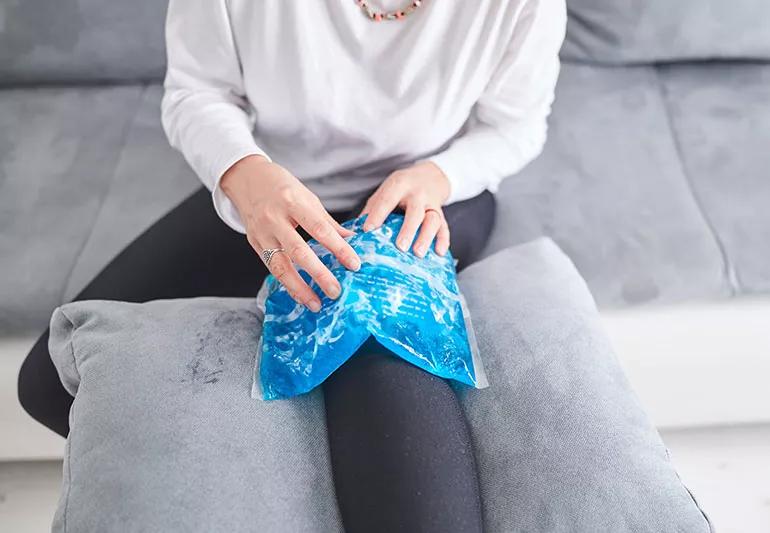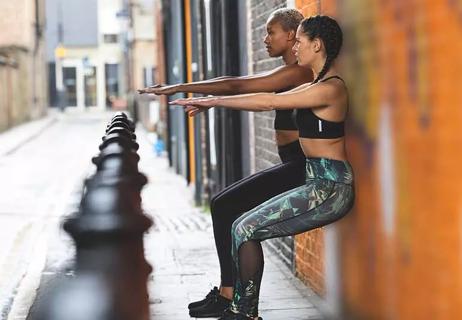Overcoming jumper’s knee takes patience

Workout after workout, you’re grinding toward your goals. Take it easy? Heck, no! So you push and push and push some more.
Advertisement
Cleveland Clinic is a non-profit academic medical center. Advertising on our site helps support our mission. We do not endorse non-Cleveland Clinic products or services. Policy
Then, one day, you feel a little twinge of pain just below your kneecap. It’s tender the next day, too… and even worse the day after that. Pretty soon, that knee barks just going up a flight of stairs.
Welcome to the patellar tendonitis club, a group nobody wants to join.
It’s time to tap the brakes a little bit on your routine. Overdoing it led to this injury, so you’re not going to overpower it into submission. Getting back to 100% requires a smart — and deliberate — approach.
Let’s walk through the process with physical therapist Mike Harrington, PT, DPT.
Let’s start with a little anatomy lesson. The patellar tendon is a tough-yet-flexible band of tissue that connects the bottom of your kneecap to the top of your shinbone. It transmits the force from the quadriceps muscles to straighten your knees.
Without this 1.75-inch-long tendon, it would be really tough to walk, run or jump.
As you might imagine, the patellar tendon occupies a high-stress spot in your body… and it can take a toll, says Harrington. Asking too much of the tendon can lead to the aches, pains and irritation that define tendonitis (also spelled tendinitis).
Prolonged overuse and sudden changes in activity level are the primary causes of patellar tendonitis. The injury is also known as jumper’s knee given how common it is for those competing in sports that require serious hops. (Basketball and volleyball, for instance.)
Advertisement
That being said, the ailment doesn’t just target athletes who push it to the limits, says Harrington. Repetitive knee stress from on-the-job duties could cause the issue, too. Ditto for those carrying a few extra pounds.
That’s why addressing patellar tendonitis always starts the same way: “The first step is finding the reason why the pain started,” says Harrington. “Then you can start working to correct it.”
Before you can answer this question, you need to answer another: How bad is your case of patellar tendonitis? “What you can do depends on how much you irritated the tendon,” says Harrington.
If you catch the tendonitis early, “relative rest” paired with other treatment — such as icing, using a patellar tendon strap and taking over-the-counter anti-inflammatory medications — may quiet symptoms.
“So if you’re a runner, walk for a few days to see if the pain goes away,” says Harrington. Then slowly ease back into your regular training. Start at about 50% and increase by 10% each following week if all goes well.
But in worst-case scenarios, when you’re feeling consistent pain or weakness in the joint tendon while just going through your day, plan to halt any knee-stressing workouts for a few weeks. This would involve activities that include running and jumping.
A good rule of thumb? “If you’re having trouble going up or down stairs, you need to significantly modify your workouts,” says Harrington.
In any case, a return to exercise should be gradual to avoid re-aggravating the injury.
The goal is to develop load tolerance to handle the demands on the knee, what is typically thought of as building strength around the joint, says Harrington. It’s also helpful to work on flexibility.
“This gives the tendon a break and resolves issues that can cause increased or abnormal strain on the tendon,” notes Harrington.
Tight muscles in your hamstrings, hips or calves can contribute to a flare-up of patellar tendonitis by putting added stress on your knee. Stretches and exercises that target your lower body can prevent or ease the problem.
Suggested stretches and exercises include:
What this helps: The stretch can increase flexibility and loosen up your hamstrings and hips, allowing better range of motion in your knee and pelvis.
Advertisement
What this helps: The stretch addresses tightness in the calf, which can lead to knee and foot pain.
What this helps: The stretch targets muscles across your hip and knee joints.
What this helps: The exercise strengthens your abdominal muscles and the upper thigh.
Advertisement
What this helps: This exercise builds strength in your thighs.
What this helps: This simple body-resistance exercise strengthens your glutes and leg muscles to better support knee operation.
The timeline varies from person to person, but Harrington cautions that the process can take longer than most expect. “You can’t rush it,” he says. “The key is to be consistent, patient and willing to modify activities.”
Pushing too hard, too fast can lead to a setback. If you do an activity and feel knee pain afterward, it’s a sign to dial down the intensity level of your workout.
“It’s easy to get frustrated,” says Harrington, “but slow and steady is the idea here.”
Advertisement
Learn more about our editorial process.
Advertisement

Wall squats and calf stretches are among the exercises that can help ease knee pain

Your age and other factors may affect this injury

The simple and inexpensive band is a proven way to ease your knee pain

No one drug or therapy alone is effective — but a comprehensive approach can ease symptoms

Plus, ways to keep your bones healthy and strong!

Bone health starts with proper nutrition, exercise and healthy lifestyle choices

Cramps can creep up if your shoes are too tight, you’re dehydrated or you have poor circulation

Vitamin D is an umbrella term for both D2 and D3 — both help keep your bones and immune system strong

If you’re feeling short of breath, sleep can be tough — propping yourself up or sleeping on your side may help

If you fear the unknown or find yourself needing reassurance often, you may identify with this attachment style

If you’re looking to boost your gut health, it’s better to get fiber from whole foods